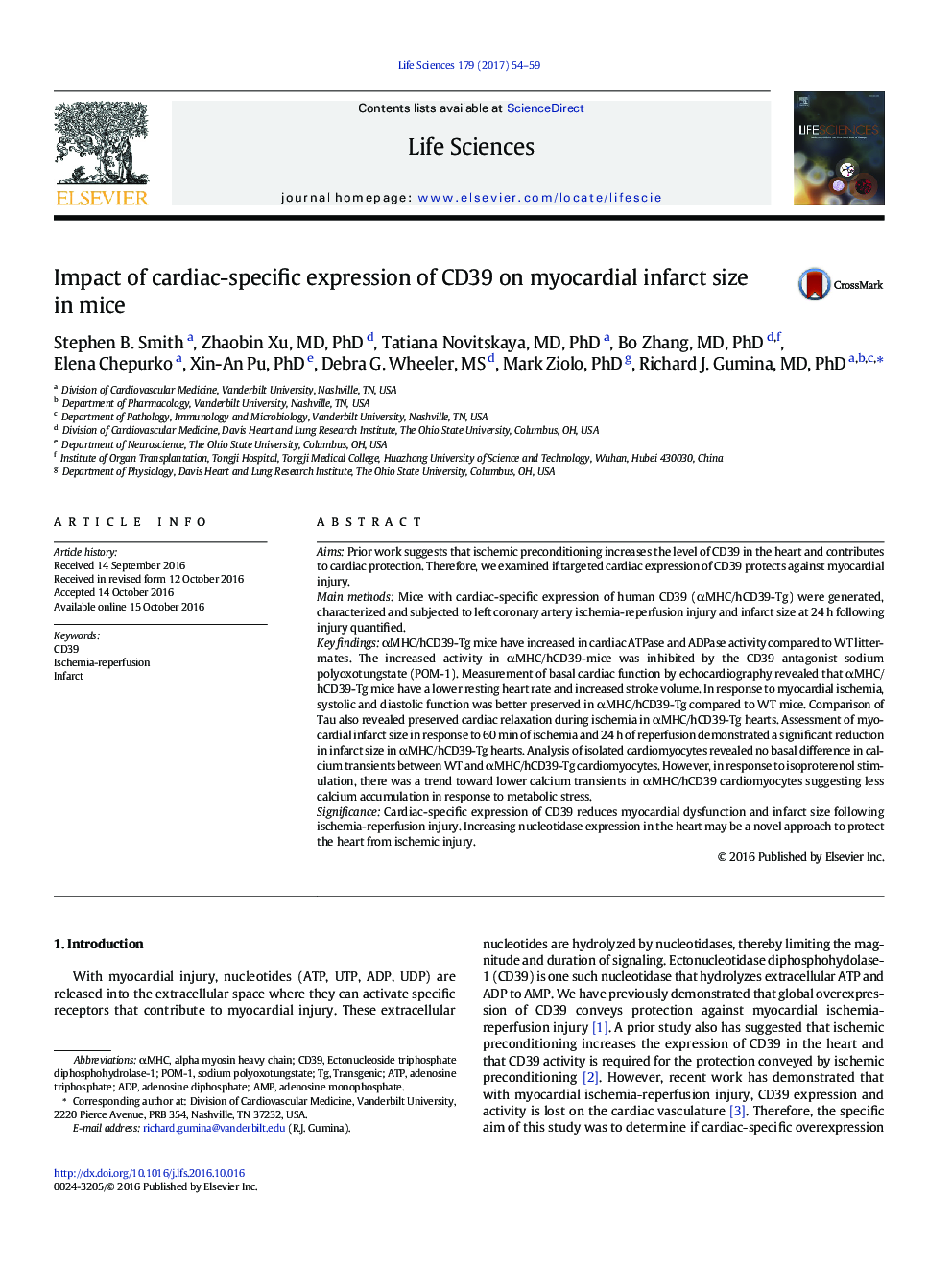| Article ID | Journal | Published Year | Pages | File Type |
|---|---|---|---|---|
| 5556918 | Life Sciences | 2017 | 6 Pages |
AimsPrior work suggests that ischemic preconditioning increases the level of CD39 in the heart and contributes to cardiac protection. Therefore, we examined if targeted cardiac expression of CD39 protects against myocardial injury.Main methodsMice with cardiac-specific expression of human CD39 (αMHC/hCD39-Tg) were generated, characterized and subjected to left coronary artery ischemia-reperfusion injury and infarct size at 24 h following injury quantified.Key findingsαMHC/hCD39-Tg mice have increased in cardiac ATPase and ADPase activity compared to WT littermates. The increased activity in αMHC/hCD39-mice was inhibited by the CD39 antagonist sodium polyoxotungstate (POM-1). Measurement of basal cardiac function by echocardiography revealed that αMHC/hCD39-Tg mice have a lower resting heart rate and increased stroke volume. In response to myocardial ischemia, systolic and diastolic function was better preserved in αMHC/hCD39-Tg compared to WT mice. Comparison of Tau also revealed preserved cardiac relaxation during ischemia in αMHC/hCD39-Tg hearts. Assessment of myocardial infarct size in response to 60 min of ischemia and 24 h of reperfusion demonstrated a significant reduction in infarct size in αMHC/hCD39-Tg hearts. Analysis of isolated cardiomyocytes revealed no basal difference in calcium transients between WT and αMHC/hCD39-Tg cardiomyocytes. However, in response to isoproterenol stimulation, there was a trend toward lower calcium transients in αMHC/hCD39 cardiomyocytes suggesting less calcium accumulation in response to metabolic stress.SignificanceCardiac-specific expression of CD39 reduces myocardial dysfunction and infarct size following ischemia-reperfusion injury. Increasing nucleotidase expression in the heart may be a novel approach to protect the heart from ischemic injury.
